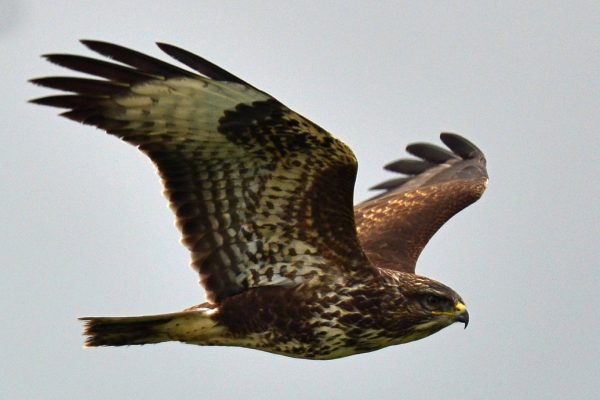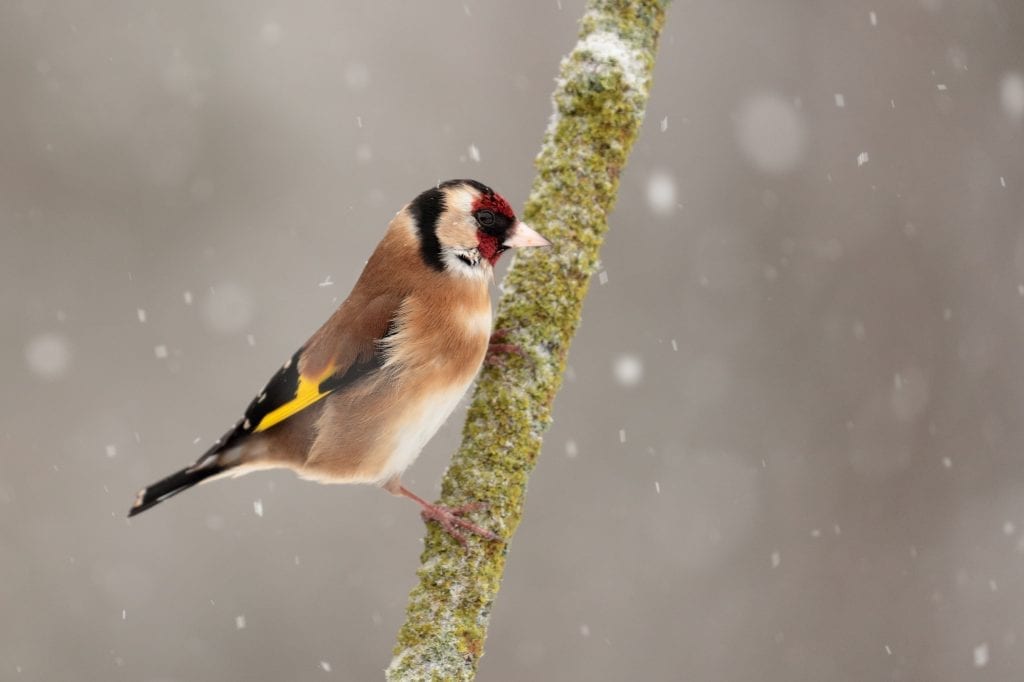
Buzzard
| Irish Name: | Clamhán |
| Scientific name: | Buteo buteo |
| Bird Family: | Raptors |
green
Conservation status
Conservation status
Status
Largely resident, though Ireland receives birds from Britain during the winter.
Identification
A medium sized raptor (bird of prey) with broad wings, a compact body, short neck and medium-length tail. Has a short hooked bill suitable for eating meat. Often seen sitting on fences and telegraph posts or soaring high in the sky, where it shows a fan shaped tail and spread outer wing feathers. Will also hang in the wind on updrafts. Flies with quick, stiff wing beats. Buzzards have very variable plumages from very dark to very light. Much of the plumage is barred. Adults are brown on the upperparts, body and underwing coverts and show a broad black band on the end of the tail and wing feathers. The rest of the underwings are whitish and finely barred. Variation in adult plumage is displayed on both the upper and under sides and some birds can be extremely pale, especially in the tail and upperwing coverts. Juvenile birds are similar to adults and also display a range of light and dark plumage variation; juveniles lack black bands on the ends of their tails and wings and some paler birds show prominent dark markings on the underwing at the carpal (wing joint).
Voice
Very vocal for a raptor, especially in the spring. Has a loud mewing call which it uses mainly in flight.
Diet
Takes a wide variety of prey items including small mammals, birds, rabbits, insects, earthworms and amphibians.
Breeding
Until quite recently breeding birds were to be found mainly in the north and east of country, north of a line from Sligo to Wexford. Now they are widespread. Birds nest in trees and sometimes on cliffs, usually with access to open land including farmland, moorland and wetland. The species was absent in Ireland from the late nineteenth century until 1933, when a pair bred in Antrim. The species has spread slowly down from the north through the twentieth century.
Wintering
Largely resident.
Monitored by
Blog posts about this bird

'Last Christmas' - Birds in Irish Gardens last winter
There's still time to take part in the Irish Garden Bird Survey!! See here for more details.
 If you’re a BirdWatch Ireland member you’ll have already read the results of last year’s survey in your winter edition of Wings magazine. If you’re not a member, please join and support our work! But you can catch up on last year’s Irish Garden Bird Survey results with the overview below. If this is your first year to take part in the survey, don’t worry about knowing every single species that might appear in your garden – just familiarise yourself with the most common ones to start off. If you’re a survey veteran, then see how your garden bird list compares to the national average!
If you’re a BirdWatch Ireland member you’ll have already read the results of last year’s survey in your winter edition of Wings magazine. If you’re not a member, please join and support our work! But you can catch up on last year’s Irish Garden Bird Survey results with the overview below. If this is your first year to take part in the survey, don’t worry about knowing every single species that might appear in your garden – just familiarise yourself with the most common ones to start off. If you’re a survey veteran, then see how your garden bird list compares to the national average!

Over 90% of Irish Gardens
The species at the top of the list didn’t change much from previous years. Robin, as per usual, was on top, followed by Blackbird and Blue Tit. Great Tit and Magpie moved up a place each into 4th and 5th, thanks to a fall in the numbers of Chaffinch reported. Robins can still be territorial in the winter, so are pretty evenly spread across the country, while our Blackbird population is topped up by hundreds of thousands of migrants from Scandinavia in the winter, hence their high-ranking each year. Blue Tits and Great Tits are pretty ubiquitous too, and Magpies are very effective at exploiting both urban and rural habitats.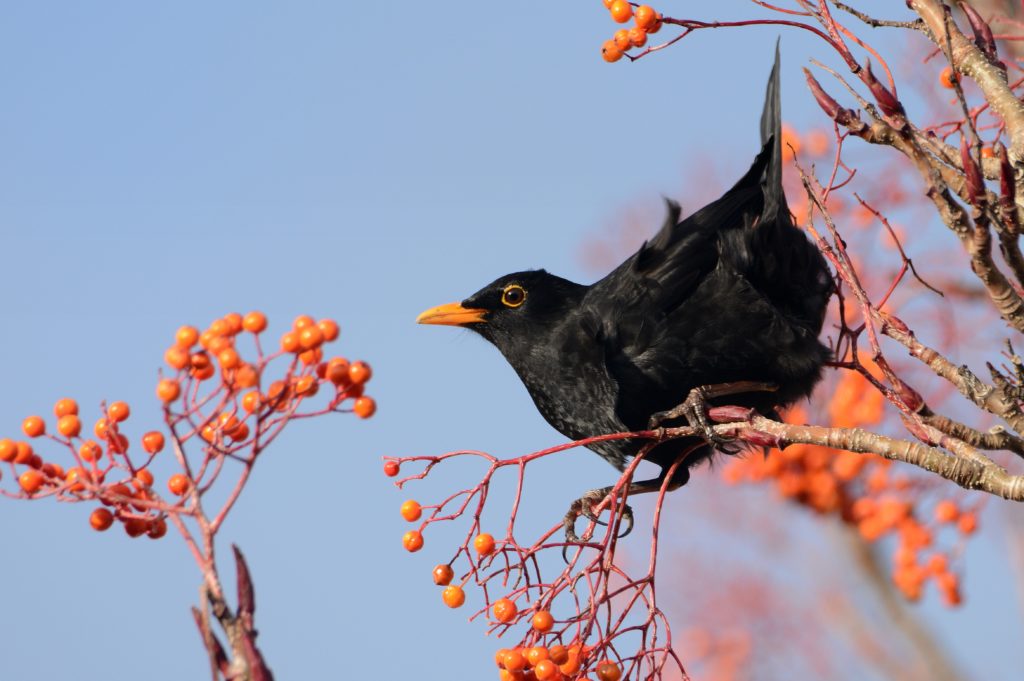
80-90% of Irish Gardens
Chaffinch and Goldfinch fell two and three places to 6th and 10th respectively, since the previous winter, and those declines were greatest in urban and suburban gardens rather than rural ones. On the back of a great breeding season, Coal Tit moved up three places to 7th place. House Sparrows kept 8th position, and Starling made it into the top 10 garden birds for the first time in a decade!
50-80% of Irish Gardens
Wren dropped two places to 11th, while species such as Dunnock (12th), Rook (16th), Collared Dove (17th) all stayed in the same position as the previous winter. When a winter is pretty mild (the occasional storm excluded) we tend to see this stability in the rankings across many species. There was some slight movement for Woodpigeon (14th), Jackdaw (15th) and Hooded Crow (19th), all of which fell one place. The mild weather tends to mean these species aren’t forced to retreat to gardens for food as much as in other winters. Song Thrush increased by around 2% and jumped to places in the rankings to 13th. Pied Wagtail rose up two places to 18th and occurred in >7% more gardens than they did on average over the preceding five year period. Despite being very common in towns, cities and shopping centre carparks, they’re actually seen in twice as many rural gardens as urban or suburban ones. Greenfinch continue to suffer the devastating effects of trichomoniasis (make sure to clean your feeders regularly!) and reached a new low for the species in the survey – 20th place.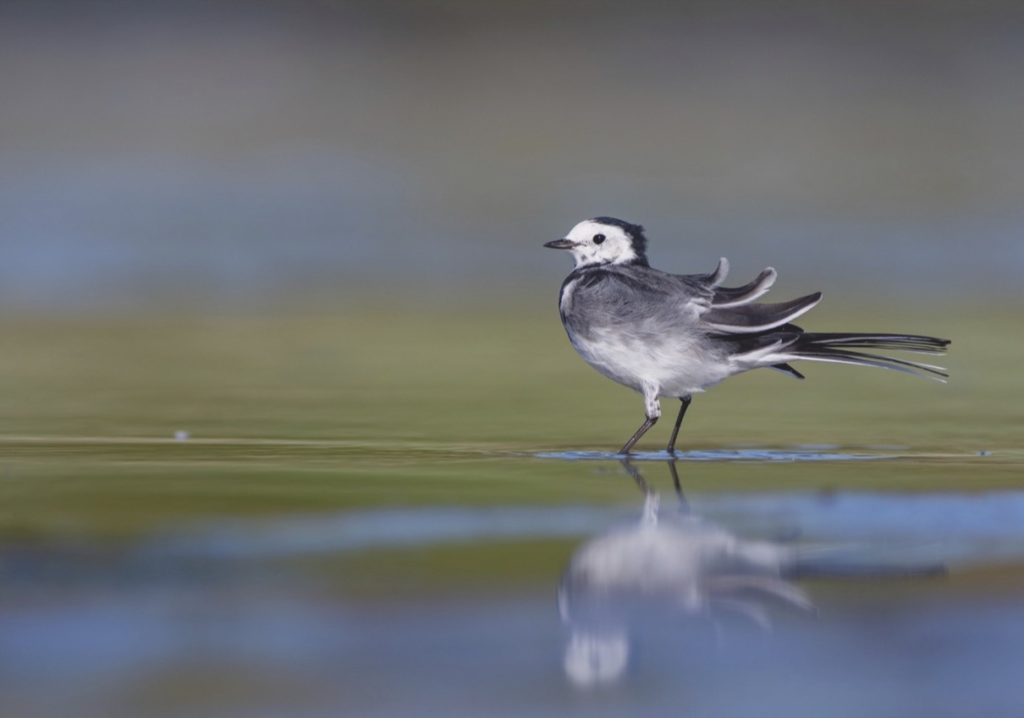
20-50% of Irish Gardens
While the above species occur in more than 50% of gardens, you’re in the minority if one of the below appears in your garden this winter: Siskin jumped up 7 places (8%) since the previous year. They usually start to appear in gardens from mid-January onwards, but they were making appearances from late November right through to March in most parts of the country last winter. No other species made such a big jump pup the table! One of the bigger losers was Goldcrest - down 5 places to 29th, a decrease of nearly 8%. It was a mild winter, and a good breeding season for most species in 2020, so the reason for this isn’t immediately obvious. Bullfinch dropped three places to 24th, but this might just be due to the mild winter and abundance of feeding options in the wider countryside, as they’re not a bird that visits feeders and so aren’t as associated with gardens as other finches. Other species in the 20-50% band include Blackcap, Long-tailed Tit, Sparrowhawk, Mistle Thrush and Feral Pigeon. Again, not species that tend to avail of bird feeders with any regularity, but species who know how to make a good living in a human-dominated landscape, be it rural, urban or suburban.Best of the rest
Despite being a non-native species, Pheasants tend to be seen in 15-20% of gardens each year, which is surprisingly high considering they don’t tend to breed well in the wild, so are reliant on being released by gun clubs every autumn. Buzzards moved two places up the rankings and are seen over 15% of gardens each winter. Herring Gulls were in 11% of gardens, Black-headed Gulls in 4%, and 1.3% of gardens had some sort of gull visiting but weren’t sure what species! Great Spotted Woodpeckers are one of the most recent additions to our bird community, and over 4% of gardens had one visiting their peanut feeders (it’s always peanut feeders!) last winter. They’re now breeding in almost every county in Ireland, so expect to see them charging up the rankings table in the coming years. Last year was a mast year for acorns, which meant Oak trees were providing a huge bounty for species such as Jays, and as a result they were seen in fewer gardens than usual (8%, down 1% from the average). This tends to happen every few years. Lastly, Redwing and Fieldfare, our two wintering thrush species, both dropped a bit, thanks again to the mild winter.
 See below for the full Top 30 birds in Irish gardens last winter, and their various ups and downs since the previous year. Most gardens record between 10 and 25 species over the course of a winter. Whether you have more or less than that, we still need you do to the survey!
See below for the full Top 30 birds in Irish gardens last winter, and their various ups and downs since the previous year. Most gardens record between 10 and 25 species over the course of a winter. Whether you have more or less than that, we still need you do to the survey!




We are hugely grateful to Ballymaloe for their sponsorship and support of the Irish Garden Bird Survey.
For more details about the Irish Garden Bird Survey click here, or download the survey form below.

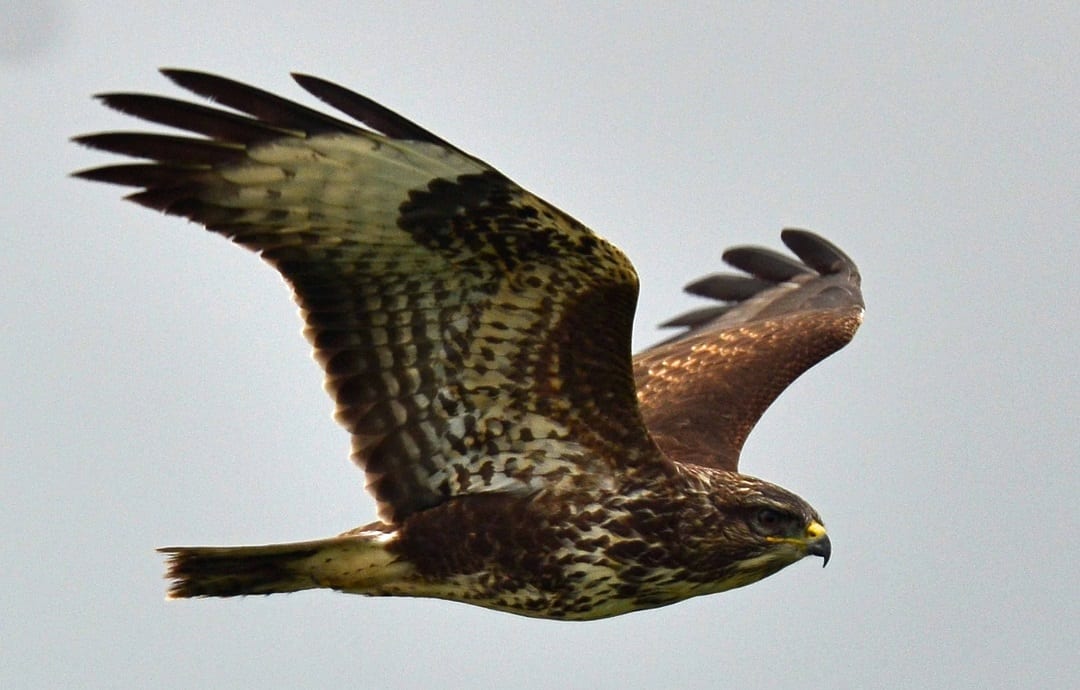
BirdWatch Ireland welcomes prosecution for possession of dead Buzzards
BirdWatch Ireland welcomes the three-month suspended prison sentence handed down to an individual for the possession of two dead Buzzards. In this case the Buzzards, which were shot using highly poisonous lead ammunition, were strung out onto posts on a farm, and displayed in a cruel and callous way.
The dedicated work done by the National Parks and Wildlife Service rangers to secure the conviction was central to this result and we thank them.
John Lusby, Raptor Conservation Officer at BirdWatch Ireland, said “This was a heinous wildlife crime where two beautiful Buzzards were shot and then hung out on posts wings outstretched. It is welcome to see the harder line being taken to address wildlife crime and we thank the Minister for Heritage, Malcolm Noonan, for giving it much needed focus. A clear strategy and sufficient resources for the new Wildlife Crime Unit and the ranger network to ensure that wildlife crime is stamped out and perpetrators are brought to justice is needed”.
Notes: More information about Buzzards can be found here https://birdwatchireland.ie/birds/buzzard/





